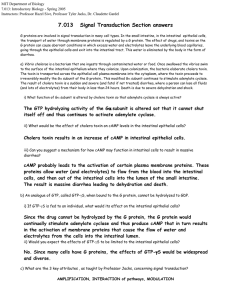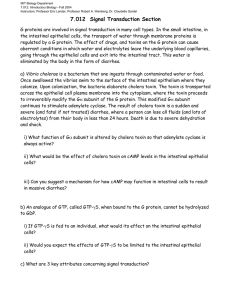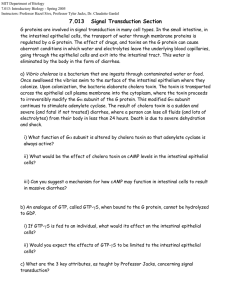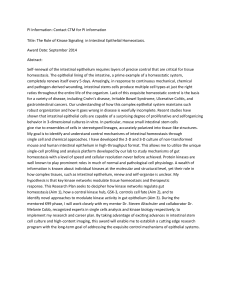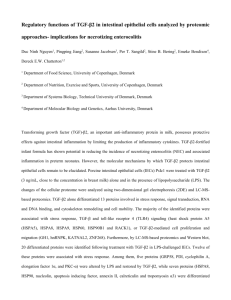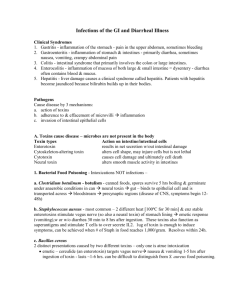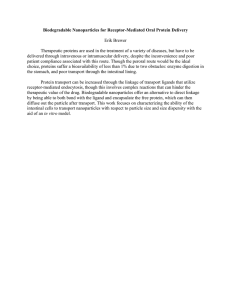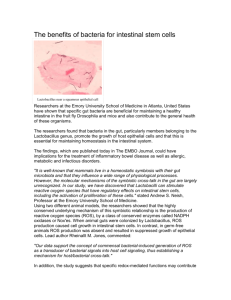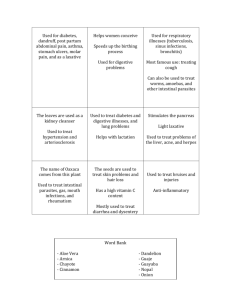Document 13478141
advertisement
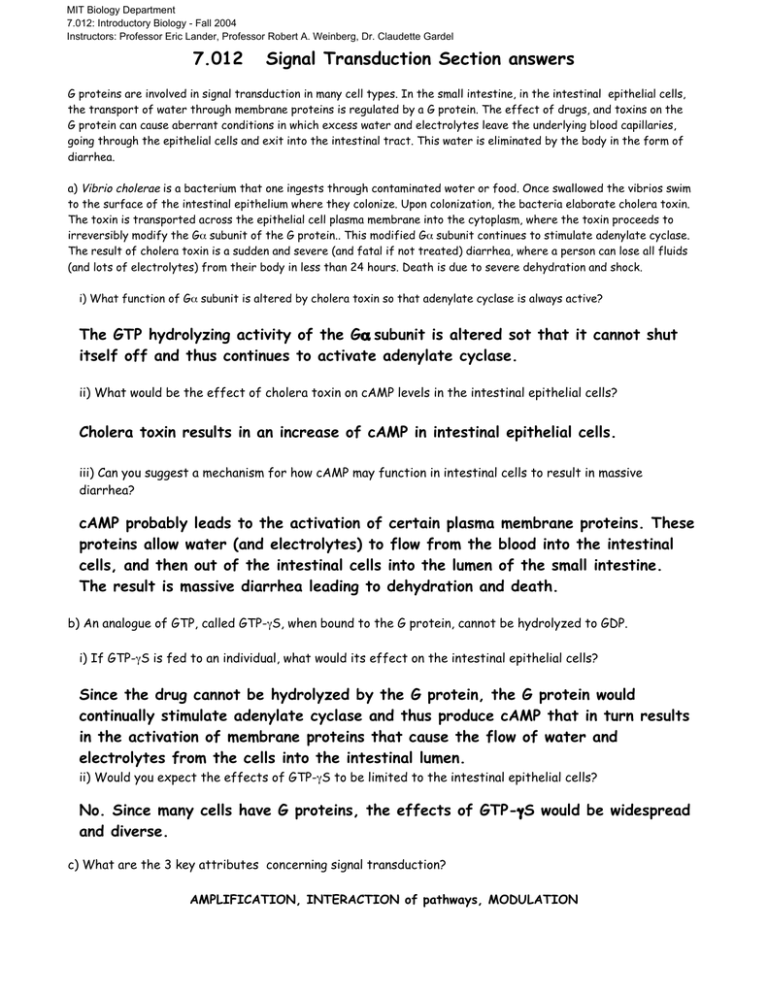
MIT Biology Department 7.012: Introductory Biology - Fall 2004 Instructors: Professor Eric Lander, Professor Robert A. Weinberg, Dr. Claudette Gardel 7.012 Signal Transduction Section answers G proteins are involved in signal transduction in many cell types. In the small intestine, in the intestinal epithelial cells, the transport of water through membrane proteins is regulated by a G protein. The effect of drugs, and toxins on the G protein can cause aberrant conditions in which excess water and electrolytes leave the underlying blood capillaries, going through the epithelial cells and exit into the intestinal tract. This water is eliminated by the body in the form of diarrhea. a) Vibrio cholerae is a bacterium that one ingests through contaminated woter or food. Once swallowed the vibrios swim to the surface of the intestinal epithelium where they colonize. Upon colonization, the bacteria elaborate cholera toxin. The toxin is transported across the epithelial cell plasma membrane into the cytoplasm, where the toxin proceeds to irreversibly modify the Gα subunit of the G protein.. This modified Gα subunit continues to stimulate adenylate cyclase. The result of cholera toxin is a sudden and severe (and fatal if not treated) diarrhea, where a person can lose all fluids (and lots of electrolytes) from their body in less than 24 hours. Death is due to severe dehydration and shock. i) What function of Gα subunit is altered by cholera toxin so that adenylate cyclase is always active? The GTP hydrolyzing activity of the Gα subunit is altered sot that it cannot shut itself off and thus continues to activate adenylate cyclase. ii) What would be the effect of cholera toxin on cAMP levels in the intestinal epithelial cells? Cholera toxin results in an increase of cAMP in intestinal epithelial cells. iii) Can you suggest a mechanism for how cAMP may function in intestinal cells to result in massive diarrhea? cAMP probably leads to the activation of certain plasma membrane proteins. These proteins allow water (and electrolytes) to flow from the blood into the intestinal cells, and then out of the intestinal cells into the lumen of the small intestine. The result is massive diarrhea leading to dehydration and death. b) An analogue of GTP, called GTP-γS, when bound to the G protein, cannot be hydrolyzed to GDP. i) If GTP-γS is fed to an individual, what would its effect on the intestinal epithelial cells? Since the drug cannot be hydrolyzed by the G protein, the G protein would continually stimulate adenylate cyclase and thus produce cAMP that in turn results in the activation of membrane proteins that cause the flow of water and electrolytes from the cells into the intestinal lumen. ii) Would you expect the effects of GTP-γS to be limited to the intestinal epithelial cells? No. Since many cells have G proteins, the effects of GTP-γS would be widespread and diverse. c) What are the 3 key attributes concerning signal transduction? AMPLIFICATION, INTERACTION of pathways, MODULATION
